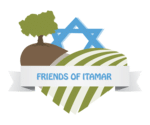Parshat Shemini – 2010
Parshat Shemini March 8, 2010 Leah Goldsmith Please see Shemini 2009 The shalosh regalim, the three major Jewish festivals – 1) Sukkot – when we go out from the solid walls of
0 Comments
Parashat Emor – The Power of Speech – 2009
Emor May 8, 2009 If I write Emor and Omer (in English) it’s pretty much the same word, only scrambled. The fact is, Emor is always read during the Omer and they actually are
Parashag Shemini – A shining Light 2009
Shemini April 18, 2009 A candle can be fed or extinguished by the wind, depending on how it blows. If it blows too hard, the flame separates from the wick, therefore it blows out.
Parashat Vayikrah (connected to parashat Pikudey)
Pekudey- Vayikra March 14, 2008 Dedicated to the Kdoshim meMercaz Harav The tabernacle was built and dismantled many times on the journey through the desert. Mainly, this is the th

